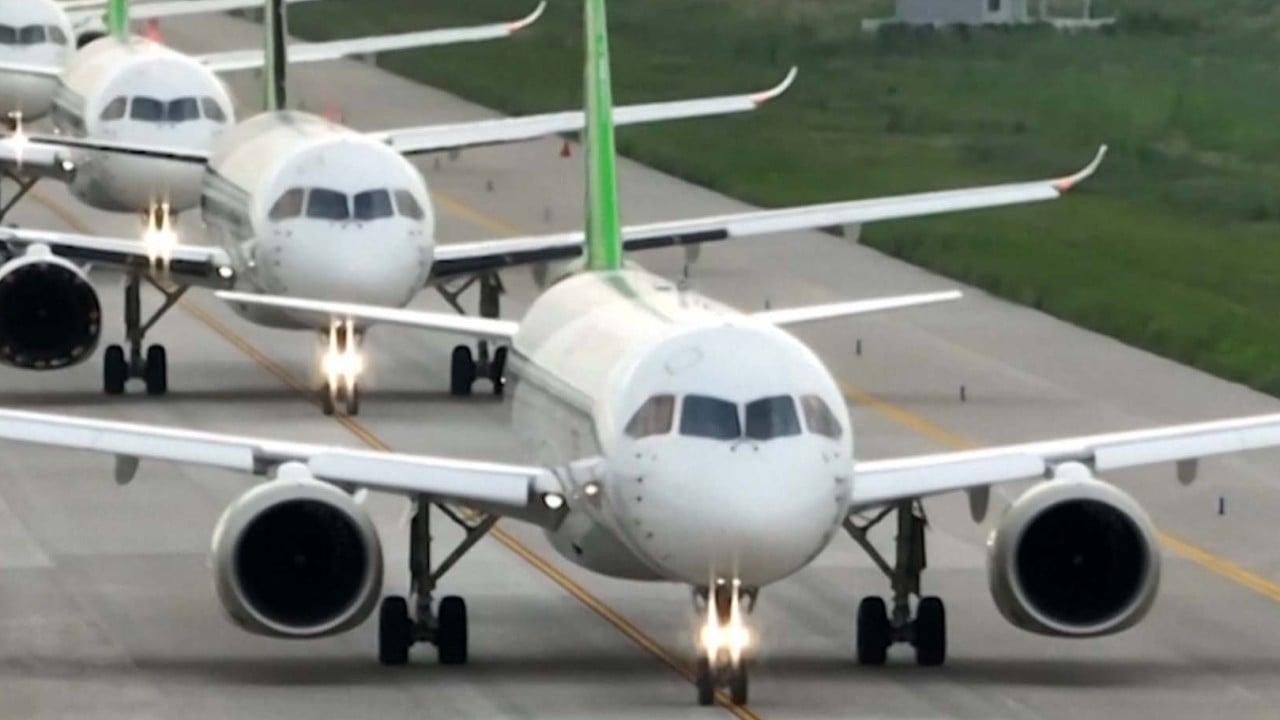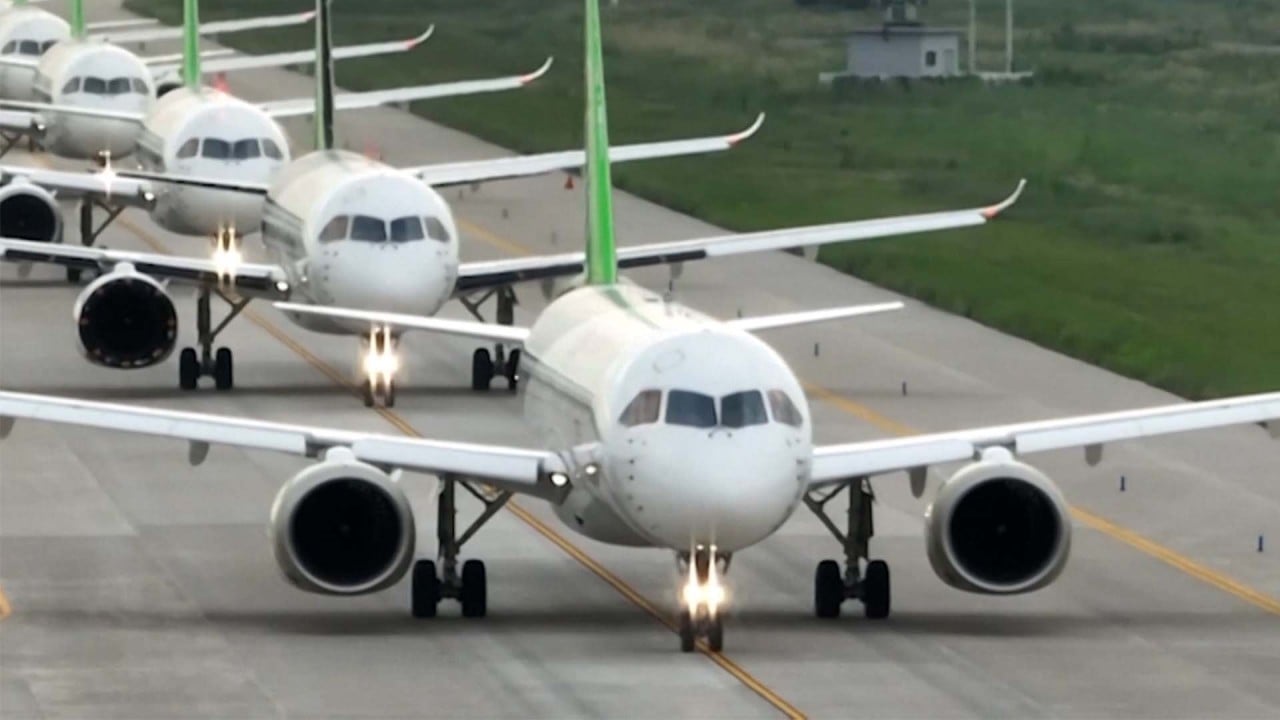
After delivery to China Eastern, the C919 will undergo more than 100 hours of test flights, with stops in Shanghai, Beijing, Xian, Kunming, Guangzhou, Chengdu, Lanzhou, Haikou, Wuhan, Nanchang, and Jinan, according to the official Xinhua News Agency. Upon completion, the plane will receive confirmation of its operational safety, maintenance reliability, and support capabilities.
Xinhua reported the C919 is expected to meet the rest of the requirements in the spring of next year, after which it will be put into commercial operation.
The Shanghai-based airline ordered four of the aircraft in May at a cost of US$99 million each. Comac has said it plans to deliver the rest of the orders within the next two years.
The state-owned aerospace manufacturer confirmed at the Zhuhai air show in November that it had secured orders from seven leasing firms for 300 of the planes, which are designed to carry 158 to 192 passengers.
Zhang Xiaoguang, director of marketing at Comac, said on Friday the C919 will be adjusted according to passenger needs.
“The continuous optimisation of the C919 comes from more than 10,000 improvement requests we have collected from airlines,” Zhang was quoted as saying by Shanghai Securities News.
The plane was certified to fly by the Civil Aviation Administration of China (CAAC) in September after 14 years of development.
However, most of its key parts are imported from foreign manufacturers, including the engine, avionics, control systems, communications and landing gear.
Delivery of the C919 could be complicated further as the advanced technology sector has been negatively affected by China-US tensions.
China’s aviation industry is facing more export controls from Washington, which is deeply concerned with the country’s military-civil fusion strategy that aims to modernise the defence force by integrating civilian research and the commercial sector with military-industrial players.



